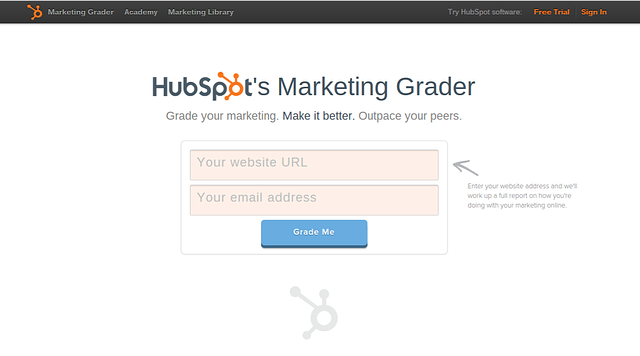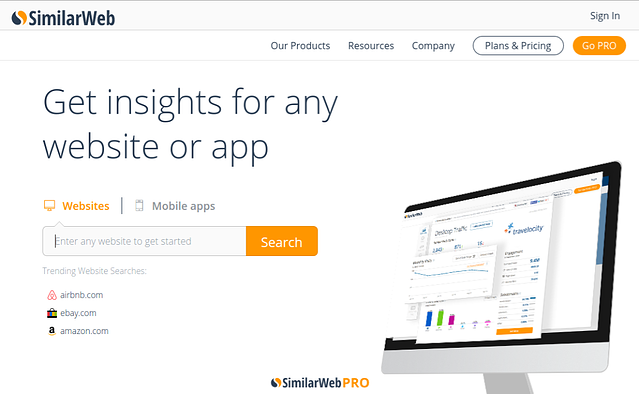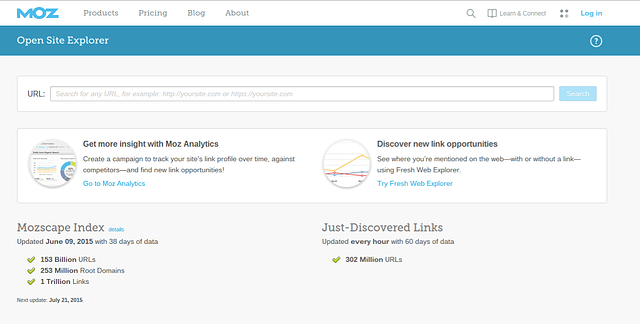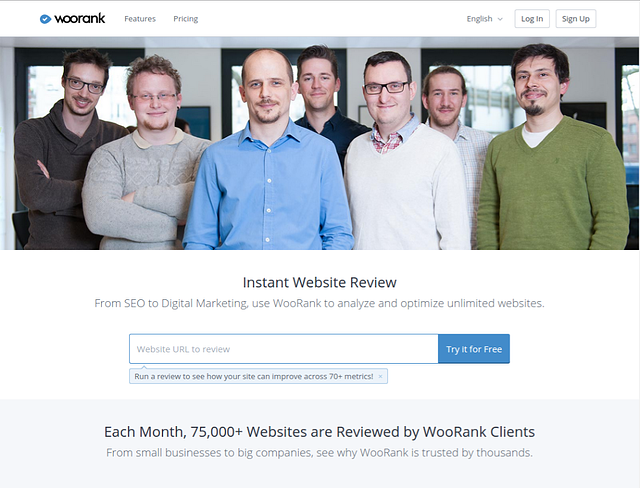 Your website is a vital part of your inbound marketing strategy. When designed properly, your website works in tandem with your content marketing, email marketing, and social media marketing to drive traffic to your products and services.
Your website is a vital part of your inbound marketing strategy. When designed properly, your website works in tandem with your content marketing, email marketing, and social media marketing to drive traffic to your products and services.
Information is power, especially when it comes to brainstorming ideas for improving your website performance. To better inform you about the performance of your website, here’s a list of four free website rank tools that will evaluate your website compared to your competitors.
HubSpot Marketing Grader

If we can bend the meaning of “website rank” for a minute, HubSpot Marketing Grader should be your first stop on this list. While this tool determines a grade rather than a hard-and-fast rank, it delivers an evaluation of your website that directly affects your website rank. Fill in your website information and within seconds you’ll see a rundown of how your website is doing in the realm of blogging, social media, SEO, lead generation, and mobile, plus links to tips on how to improve those things.
WooRank Instant Website Review
WooRank Instant Website Review takes your website evaluation a step further to look at the hard details behind the words. Reviewing your website with this tool delivers a marketing checklist organized by priority with an explanation about why each metric is important and how you can go about getting it done in the most efficient way. The tool evaluates your website’s approach to SEO keywords, outlining the ones you are using and how you can improve their use.
SimilarWeb

SimilarWeb provides a quick view of your website rank from three perspectives: global, country, and category. The website rank tool visually displays lots of valuable metrics such as traffic sources (direct, referral, search, social, etc.). Even better, you can add a competitor’s website to the results to compare your performance side-by-side. Use this tool to get traffic insights for your website and get automatically-populated suggestions for competitors you may want to monitor.
Moz’s Open Site Explorer

Moz’s Open Site Explorer is perhaps the most thorough website rank tool available for free and it also allows you to follow along with how your competitors are building their links. The tool opens up on a dashboard that allows you to quickly view your website’s domain authority and page authority. It also offers the most comprehensive review of inbound and outbound links among the website rank checkers listed here.
Website Rank Factors to Note
When you run your website through these rank checkers, you may observe a few common factors that affect the results. If you’re ready to improve your website, pay careful attention to the following four qualities that most website rank tools take into account when evaluating your website.
- Content
As Moz outlines, search engines are on the hunt for high quality, legitimate, credible content. Since search engines can’t actually read this content, they rely on meta information and user behaviour to decide whether or not your website is worth serving up in search results. Monitoring your engagement metrics and doing your best to encourage good linking patterns are important if you want to improve your website rank. - SEO
How your website appropriates title tags, meta descriptions, headings, and even content-to-HTML ratios will affect how it performs in search rankings. Issues and errors on the SEO side of your website spell trouble for the search engines trying to crawl and index your website. Zeroing in on improvements to this area using other tools such as Screaming Frog SEO Spider or working with an expert SEO and marketing advocate will help you improve your overall website performance. - Social Media Integration
Social media marketing and integration affects your website rank and SEO both directly and indirectly. Directly, some social media updates and activities (such as likes or +1s) show up in search results, and Google takes into consideration how often a link has been tweeted or retweeted. Indirectly, social media activity increases the number of opportunities your website has for backlinks and spreads word of mouth so that more people will search for your website. - Mobile and Responsive Design
Google’s latest update -- known in digital marketing circles as “Mobilegeddon” -- brings to light an important way that mobile responsiveness affects your website’s SEO ranking. As Search Engine Journal explains, responsive design for mobile helps lower your website’s bounce rate and improves the likelihood that the high number of mobile users will have a good experience using your website.
No matter how much time you put into your website and your inbound marketing strategy, there’s always room for improvement. When you’re ready for a better-performing website, use these four free website rank checkers to identify opportunities for improvement and apply your new knowledge to your website.
Share & Prove You Found It First
The Digital Slate
Looking for timely digital marketing and sales insights to grow your business? Subscribe to our monthly digital newsletter for marketing professionals.
Subscribe


